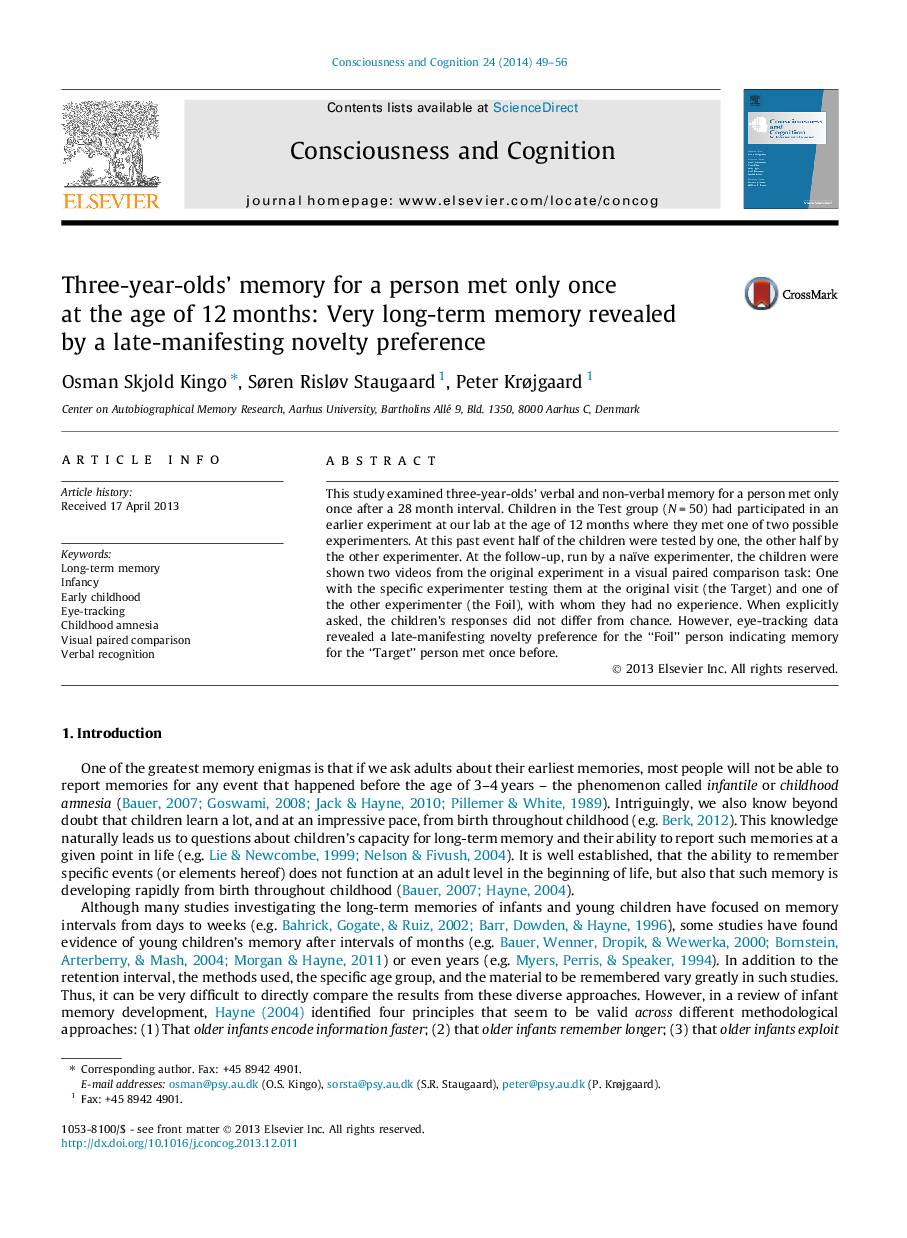| Article ID | Journal | Published Year | Pages | File Type |
|---|---|---|---|---|
| 927580 | Consciousness and Cognition | 2014 | 8 Pages |
•Three-year-olds’ remember a single encounter the age of 12 months.•Verbal and non-verbal memory for the event is assessed and only evidence of non-verbal memory is found.•A novel analysis of changes in the visual attention to the stimuli during the test.•Time-dependant analyses of the test-phase may provide important information – especially after long retention intervals.•The implicit–explicit distinction is discussed suggesting that an “explicit” interpretation is more compatible with data.
This study examined three-year-olds’ verbal and non-verbal memory for a person met only once after a 28 month interval. Children in the Test group (N = 50) had participated in an earlier experiment at our lab at the age of 12 months where they met one of two possible experimenters. At this past event half of the children were tested by one, the other half by the other experimenter. At the follow-up, run by a naïve experimenter, the children were shown two videos from the original experiment in a visual paired comparison task: One with the specific experimenter testing them at the original visit (the Target) and one of the other experimenter (the Foil), with whom they had no experience. When explicitly asked, the children’s responses did not differ from chance. However, eye-tracking data revealed a late-manifesting novelty preference for the “Foil” person indicating memory for the “Target” person met once before.
